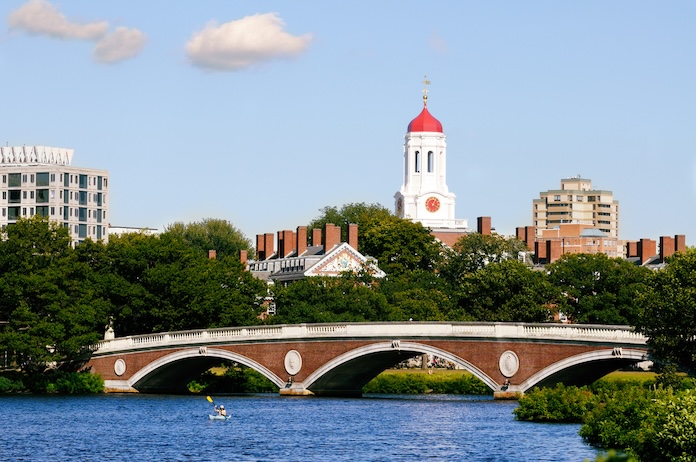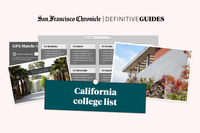Explore web search results related to this domain.
ADMISSION STATISTICS AT 150+ U.S. COLLEGES ... Please note that on our website we use cookies to enhance your experience, and for analytics purposes. To learn more about our cookies, please read our Privacy policy. By clicking “Accept Cookies”, you agree to our use of cookies.
Test optional colleges for 2022. View our chart of college admission statistics for over 150 U.S. colleges and universities.(yield = # of enrolled candidates/# of accepted candidates) • SAT and ACT submission percentages indicate the percentage of applicants sending SAT scores versus ACT scores to a particular institution. • Visit our Glossary of Terms for more college admission jargon. ... Sources: Common Data Set, 2020–2021, College Board’s BigFuture, National Center for Education Statistics, and individual college websitesThe following is a sampling of admission statistics at well-known colleges.• College selectivity is often measured by the school’s Acceptance Rate.

Early decision acceptance rates at Brown University and Williams College widened while applications declined, signs that admissions competition might be easing.
Early decision acceptance rates increased at Brown University and Williams College, two of the country’s top-ranked higher education institutions, while the number of student applications fell. Both these indications suggest that admissions competition—after years of heightening—might be easing.While so-called “decision day” for students who had applied early is in mid-December, a number of schools have decided not to release acceptance rates and applicant data until the completion of the admission cycle, or even later than that.Some top schools have said that by publicizing early acceptance rates, which have recently been at or near record-lows, qualified students might be discouraged from applying during the regular decision admissions cycle.“We expected a total applicant pool comparable to the years before the temporary test-optional policy,” said Associate Provost for Enrollment and Dean of Admission Logan Powell on the Brown website. Williams is test-optional through the fall of 2025. A demographic decline is likely also contributing to widening acceptance rates and decreases in applicant pools.
For applications submitted in the fall of 2022, the average acceptance rate for four-year colleges (in the United States) was around 73%. Public colleges tended to have a slightly higher acceptance rate (around 78%) than private colleges (around 70%).
Learn what college "acceptance rate" and "admission rate" actually mean. Then find colleges with the highest and lowest rates. Click now to get started.As we said, college acceptance rates can vary from year to year. When it comes to high acceptance rates, schools from states across the country all contend for the top spot.Once you’ve found your dream school, the question becomes: will I get in? It’s hard to predict accurately, but a college’s acceptance rate can give you an idea of your chances. This guide will cover everything you need to know about college acceptance and admission rates.However, schools vary considerably in size, so that’s something to consider, too. The lowest acceptance rate colleges are small, prestigious schools with many applicants. Colleges with the highest acceptance rates have large student bodies, low or average admissions standards, and relatively low applicant numbers.

A college’s acceptance rate is actually a ratio. It's the total number of applicants in relation to the number of students who were accepted. For example, Harvard received applications from 61,220 students in 2022─the highest-ever number of applicants to the school.
As you start thinking about which colleges to apply to and how to put together your college applications, don’t forget to familiarize yourself with current admissions requirements and acceptance trends. You may have seen recent headlines about college acceptance rates and how low they were for students who applied to the most selective colleges and universities.It’s important to remember that while admissions requirements for the most competitive schools didn’t change, the number of students applying to these types of institutions has gradually increased. As a result, acceptance rates of colleges, particularly elite universities, decreased.Although it might feel seem like there’s more competition than ever before, it’s important to remember two things: Acceptance rates vary among colleges, and most colleges accept two-thirds of applicants. Once you understand what college entrance requirements are and how to interpret college admission rates, you'll be better prepared to find the right school for you.A college’s acceptance rate is actually a ratio. It's the total number of applicants in relation to the number of students who were accepted. For example, Harvard received applications from 61,220 students in 2022─the highest-ever number of applicants to the school. Of those, only 1,214 received admission, leading to the school’s lowest-ever acceptance rate of 3.19%.

The average college acceptance rate in the United States is 68%, with more than half of all U.S. colleges and universities reporting rates of 67% or higher. In preparing a list of college acceptance rates, one should evaluate if the prospective institutions have an acceptance rate of around ...
This can be attributed to the low admission rates of top schools. Additionally, since A.Y. 2019-2020, public colleges and universities have reported a 24% increase in common applications, compared to 17% for private institutions (National Center for Education Statistics, 2022). Reports also show that college acceptance rates became even more competitive for students in 2022 (Selingo, 2022).Looking at the tables above, with their low acceptance rates, one can presume that the top U.S. educational institutions are more stringent in selecting students for admissions than their counterparts in other parts of the world. Even the cheapest online MSW programs, for instance, can refuse applicants on the basis of various criteria. Leukhina, Hendricks, and Koreshkova (2021) described this condition as the “highly meritocratic college admissions in the United States."Since this program tend to have low volume of applicants, the acceptance rate is high, except for colleges with stringent admission policies. In a typical economics degree program, students study topics such as economic theory, statistical methods, economic policy, and the application of economic principles to real-world issues.The average college acceptance rate in the United States is 68%, with more than half of all U.S. colleges and universities reporting rates of 67% or higher. In preparing a list of college acceptance rates, one should evaluate if the prospective institutions have an acceptance rate of around the average. These institutions generally have qualification requirements matching most applicants’ profiles. Therefore, the chances of admission to these colleges are good, if not better.

Explore the Ivy League & college acceptance rates, admission statistics & early decision stats for Ivies, universities & Liberal Arts colleges.
With early admissions stats for the Class of 2028 and Class of 2028 regular decision Ivy League admissions data as well as stats from previous years, our college acceptance rate data and summaries will help you understand trends in college admissions.Comparing early decision statistics can help college applicants like you better understand your chances for admission to Ivy League schools and highly selective colleges and universities, from Brown or Dartmouth to U Penn or MIT. All schools have gotten more competitive given the trickle down effect, so stay tuned as we update admissions data to give you information on acceptance rates at competitive schools from Northwestern and Middlebury to Davidson and Duke.Top Tier Admissions provides you with the latest college admissions statistics, from Ivy League admissions stats to college acceptance rates for top liberal arts schools and universities.Ivy League and Top College Acceptance Rates and Admissions Statistics Top Tier Admissions provides you with the latest college admissions statistics, fro

Previous Page Download Excel (52KB)
Baccalaureate and Beyond (B&B) Career/Technical Education Statistics (CTES) Integrated Postsecondary Education Data System (IPEDS) National Postsecondary Student Aid Study (NPSAS) more...Common Education Data Standards (CEDS) National Forum on Education Statistics Statewide Longitudinal Data Systems Grant Program - (SLDS) more...Distance Learning Dataset Training National Postsecondary Education Cooperative (NPEC) Statistical Standards Program more...Condition of Education Digest of Education Statistics Projections of Education Statistics Topical Studies

Institutions like Cornell, Harvard, ... with acceptance rates ranging from 3% to 7%. These universities are known for their academic excellence, exclusive admissions processes, and global recognition, making them highly sought-after by students worldwide. For years, the United States has been regarded ...
Institutions like Cornell, Harvard, Princeton, Stanford, and MIT are highly competitive, with acceptance rates ranging from 3% to 7%. These universities are known for their academic excellence, exclusive admissions processes, and global recognition, making them highly sought-after by students worldwide. For years, the United States has been regarded as a top destination for higher education, attracting both domestic and international students.News News: The U.S. is home to prestigious universities with low acceptance rates, reflecting their high demand and selectivity. Institutions like Cornell, HarvaThe country is home to numerous globally recognized universities, including Harvard, Yale, MIT, and Stanford—institutions that thousands of students aspire to join for their academic pursuits. However, gaining admission to these prestigious universities is neither easy nor affordable. While it is well-known that the cost of higher education in the US is exceptionally high, many of these universities also have extremely low acceptance rates.A low acceptance rate in colleges indicates that the institution admits only a small percentage of applicants, often due to high demand and limited spots. It typically reflects the college's selectivity and competitiveness, underscoring its academic reputation, popularity, and rigorous admission standards.

Data on acceptance rates are readily available for most colleges, but our guide’s exclusive analysis shows admissions stats for each California high school. College counselors say this data can be critical to gauging your chances because schools compare you to other applicants from your high ...
Data on acceptance rates are readily available for most colleges, but our guide’s exclusive analysis shows admissions stats for each California high school. College counselors say this data can be critical to gauging your chances because schools compare you to other applicants from your high school, both from the current admissions cycle and years past.Detailed admissions data for every UC and CSU, including GPA averages, acceptance rates, community college pathways.A record-breaking 4 million students in the U.S. and 450,000 seniors in California will apply to college this fall, making the 2024-2025 season even more competitive than years past. UCLA’s acceptance rate has plunged, and Cal Poly SLO is now more difficult to get into than about half the UCs.

Explore UCLA acceptance rate, stats, rankings, early decision, and regular decision processes. Learn what it takes to get admission in UCLA, including key factors and application tips.
This trend continued in 2023, with the acceptance rate reaching a historic low, further solidifying UCLA’s position as one of the most selective universities in the country. This remarkable rise in selectivity underscores the exceptional quality of students vying for admission to UCLA, a testament to the university’s unwavering commitment to academic excellence.While the acceptance rate may be lower, it’s important to remember that UCLA still admits a significant number of students each year. In 2023, for instance, UCLA admitted over 12,000 students out of a pool of over 140,000 applicants. This means that even though the competition is stiff, it’s still possible to gain admission to UCLA with hard work, dedication, and a strong application.One of the reasons for UCLA’s low acceptance rate is its strict GPA requirement. Simply applying isn’t enough; you need to demonstrate academic excellence. As part of the UC system, UCLA adheres to the system’s GPA requirement. To gain admission to any UC school, you must maintain a minimum GPA of 3.0 and avoid any grades below a “C”.For instance, the School of Music has a relatively high acceptance rate of around 21%, while the UCLA School of Arts and Architecture is much more selective, with an acceptance rate of only 5%. And the Henry Samueli School of Engineering, the second-largest college, only accepts 5% of students. This means that students aiming for these competitive majors may face a tougher admissions process compared to those applying to the College of Letters and Science, which has a more generous acceptance rate of 11%.
Harvard welcomes students from across the country and all over the world, with diverse backgrounds and far-ranging talents and interests.
The Admissions Statistics page includes data on the number of applications, the number of admitted students (including those admitted from the waitlist), and the number of enrolling students.For 90% of American families, Harvard is more affordable than their local state school.Moving to a single, annual admissions data release each fall will provide the most complete view of the newly enrolled class, reducing confusion and offering a predictable timeline. Due to the 2023 U.S. Supreme Court decision, we are unable to access all information about Harvard’s applicants, admitted students, and enrolling students, while the application review process is still underway.Harvard will release admissions data, including final numbers of enrolled students consistent with our mandatory reporting to the U.S. Department of Education, as well as other information on applicants and admitted students. The new timeline for sharing admissions and matriculation data will provide clear and comprehensive information about the entire admissions process that can be compared on an annual basis.


Our team is composed of professionals ... of the admissions committees at some of the most prestigious law schools in the U.S. If you're interested, book a free consultation to get started. Increase your acceptance rate to any top law program to 94% with the help of our experts. ... The median acceptance rate for law schools in the United States is 41%, with ...
Our team is composed of professionals who have been a part of the admissions committees at some of the most prestigious law schools in the U.S. If you're interested, book a free consultation to get started. Increase your acceptance rate to any top law program to 94% with the help of our experts. ... The median acceptance rate for law schools in the United States is 41%, with some institutions boasting acceptance rates surpassing 65%.Here are some law school admissions statistics to keep in mind when applying. The median acceptance rate for law schools is 41%.The top 15 law schools in the United States collectively maintain an average acceptance rate of 12.6%. On average, incoming law school students possess a GPA of 3.55. In the past year, 38,019 JD students enrolled in law schools. Yale Law School, Stanford Law School, and Harvard Law School stand out as the three most challenging law schools to gain admission to.Writing a law school personal statement can be complicated and overwhelming, but these effective tips will help you write an amazing personal statement. The best way to increase your chances of acceptance is getting law school admissions support.
Below, we’ve included some important college admissions statistics, facts, and figures that will help you understand the trends in admission over the past decade. 2024 college admission rates dropped as low as 3.65%, making it another competitive year for students applying to the most selective colleges and universities in the U.S. College acceptance ...
Below, we’ve included some important college admissions statistics, facts, and figures that will help you understand the trends in admission over the past decade. 2024 college admission rates dropped as low as 3.65%, making it another competitive year for students applying to the most selective colleges and universities in the U.S. College acceptance rates over time have been dropping dramatically, making for an extremely competitive admissions process at some of the country’s top colleges and universities.Here’s a look at U.S. college admission rates over the years. *Some schools have announced that they will not provide admission statistics at the time decisions are released. This means data may not be available until the publication of their Common Data Set the following year. For waitlisted students, it can be hard to judge just how much of a chance they have of getting accepted off the waitlist.Data around waitlist acceptances can be scarce, especially as waitlists at top colleges grow and more and more schools become less transparent about their admissions statistics. The college counselors at IvyWise, however, have dug into the data and have some insight into waitlist admission rates.Admission rates fluctuate from year to year. We track the latest admission statistics at some of the top schools in the U.S.


Among the California State University ... and Cal State Long Beach could be reaches, especially for sought-after majors like business, nursing and the sciences, while Cal Poly San Luis Obispo is the “super reach.” · UCLA’s acceptance rate makes it a “super reach,” with the campus having received the most first-year applications of any university in the country for many years now. It has the lowest admissions rate among ...
Among the California State University schools, San Jose State and Cal State Long Beach could be reaches, especially for sought-after majors like business, nursing and the sciences, while Cal Poly San Luis Obispo is the “super reach.” · UCLA’s acceptance rate makes it a “super reach,” with the campus having received the most first-year applications of any university in the country for many years now. It has the lowest admissions rate among UCs at 9% (for in-state applicants, it’s 10%).She called out San Francisco State as one such school, where the average GPA of admitted applicants was 3.60 for first-years entering in fall 2023. ... The Chronicle’s Definitive Guide to California College Admissions offers exclusive tools on undergraduate acceptance rates and data on every UC and CSU — including who gets admitted and enrolls from every California high school.Data on UC acceptance rates from our Definitive Guide to College Admissions shows that most campuses are now “reaches” — and several are “super reaches.”College counselors we talked to while building our California College Admissions guide said that, even for in-state applicants who are at the top of their high school class, you simply can’t control whether you will get into UCLA — even if you maximize your GPA and have exceptional extracurriculars. ... It wasn’t always this way: Historical data shows that UCLA’s admissions rate plummeted in the last three decades.

The allure of the Ivy League, comprising eight prestigious universities in the northeastern United States, remains a potent force in the realm of higher education. However, the daunting reality of exceptionally low acceptance rates colors the college admissions landscape for students aspiring ...
The allure of the Ivy League, comprising eight prestigious universities in the northeastern United States, remains a potent force in the realm of higher education. However, the daunting reality of exceptionally low acceptance rates colors the college admissions landscape for students aspiring to enter these hallowed halls.Statistical advantages often accompany Early Decision applications to Ivy League institutions, as demonstrated by higher acceptance rates for ED applicants compared to their Regular Decision counterparts. This phenomenon arises from various factors, including the smaller and often self-selected pool of ED applicants and the perception of demonstrated interest conveyed by applying early. Admissions officers often favor ED applications, as they signify a student’s strong commitment and genuine desire to attend the specific institution.Understanding Ivy League acceptance rates involves analyzing various factors such as academic achievements, extracurricular involvement, and the impact of Early Decision applications. By focusing on attaining academic excellence, showcasing leadership skills, and crafting a compelling personal statement, you can enhance your chances of gaining admission to these prestigious universities.The admission rate for students who can get a spot on these coveted lists is significantly higher than that for either Early or Regular Decision applicants. Not all schools consider legacy status when evaluating a prospective applicant, so it’s important to keep track of which schools do.

State law requires Texas public universities to provide automatic admission to Texas high schoolers who were in the top 10% of their graduating class. The Texas Legislature adjusted the rules for UT-Austin in 2009 to leave space for the university to accept other students, such as out-of-state ...
State law requires Texas public universities to provide automatic admission to Texas high schoolers who were in the top 10% of their graduating class. The Texas Legislature adjusted the rules for UT-Austin in 2009 to leave space for the university to accept other students, such as out-of-state students and student athletes.The current threshold is 6%. The change comes after the university received a record-breaking 73,000 undergraduate applications for this fall.The most recent change in the automatic admission rate is because UT-Austin continues to see the number of applicants grow, President Jay Hartzell told the university’s Faculty Council on Monday. The university received a new record of 73,000 applications this year. UT-Austin did not immediately respond to a request for comment. The Austin American-Statesman first reported the change to the automatic admission rate.Texas lawmakers created the automatic admissions requirement in 1997 to diversify Texas’ public universities. The thinking behind the law was that Texas high schools are racially and economically divided — and if universities are required to admit the top students from high schools around the state, they’re more likely to end up with a diverse class. Supporters of the rule say it has helped provide students with equal access to the state’s top schools, though they say it is not the only thing universities can do to increase the diversity of their student bodies.

Data on acceptance rates are readily available for most colleges, but our guide’s exclusive analysis shows admissions stats for each California high school. College counselors say this data can be critical to gauging your chances because schools compare you to other applicants from your high ...
Data on acceptance rates are readily available for most colleges, but our guide’s exclusive analysis shows admissions stats for each California high school. College counselors say this data can be critical to gauging your chances because schools compare you to other applicants from your high school, both from the current admissions cycle and years past.Average GPA among in-state first-year applicants for the 2023 school year · Campus GPAs were calculated by averaging the GPAs of California high schools with at least five students who applied, were admitted or enrolled. Source: University of California · Admissions rates can vary based on race and ethnicity. The table below breaks down the acceptance and enrollment rates by major race and ethnicity groups.The map below shows the California counties most represented among in-state first-years. Transferring from community colleges has long been an important pathway into the UCs, with one out of every four UC students having transferred from a community college. The table below shows the admissions rates into UC Santa Cruz from each California community college.Who gets into UC Santa Cruz and who enrolls? See acceptance rate and enrollment data.
(first-time, first-year) · Please note that Princeton was test optional for the 2023-24 application cycle. The standardized testing scores listed above are only representative of those who submitted official scores with their application. Please review our testing policy
The 100 schools on this list had the lowest acceptance rates among all the schools surveyed by U.S. News.
Many students aim for admission to a prestigious college or university, but the supply of open seats often does not meet the demand from applicants. Earning admission to the schools on this list can be especially difficult. With the lowest acceptance rates among all undergraduate institutions that U.S.


"Colleges are competing for a smaller pool of potential students, and as a result, those who do apply enjoy higher odds of admission."









